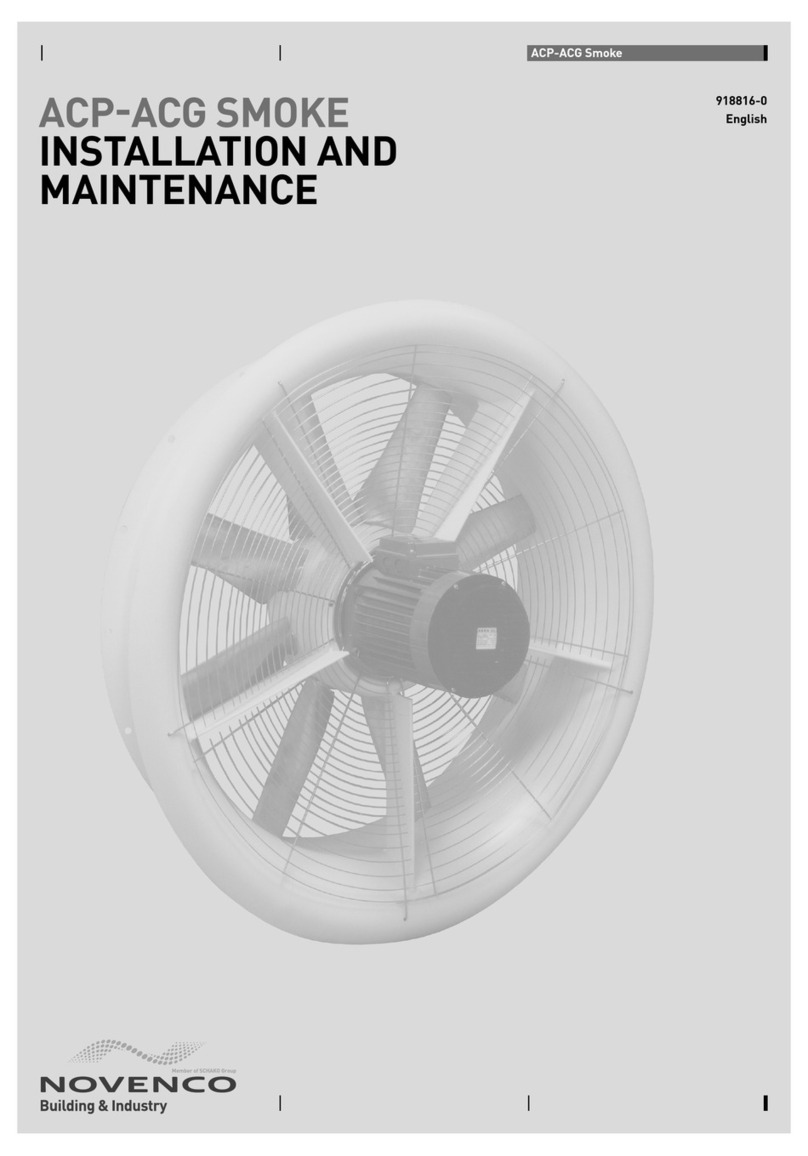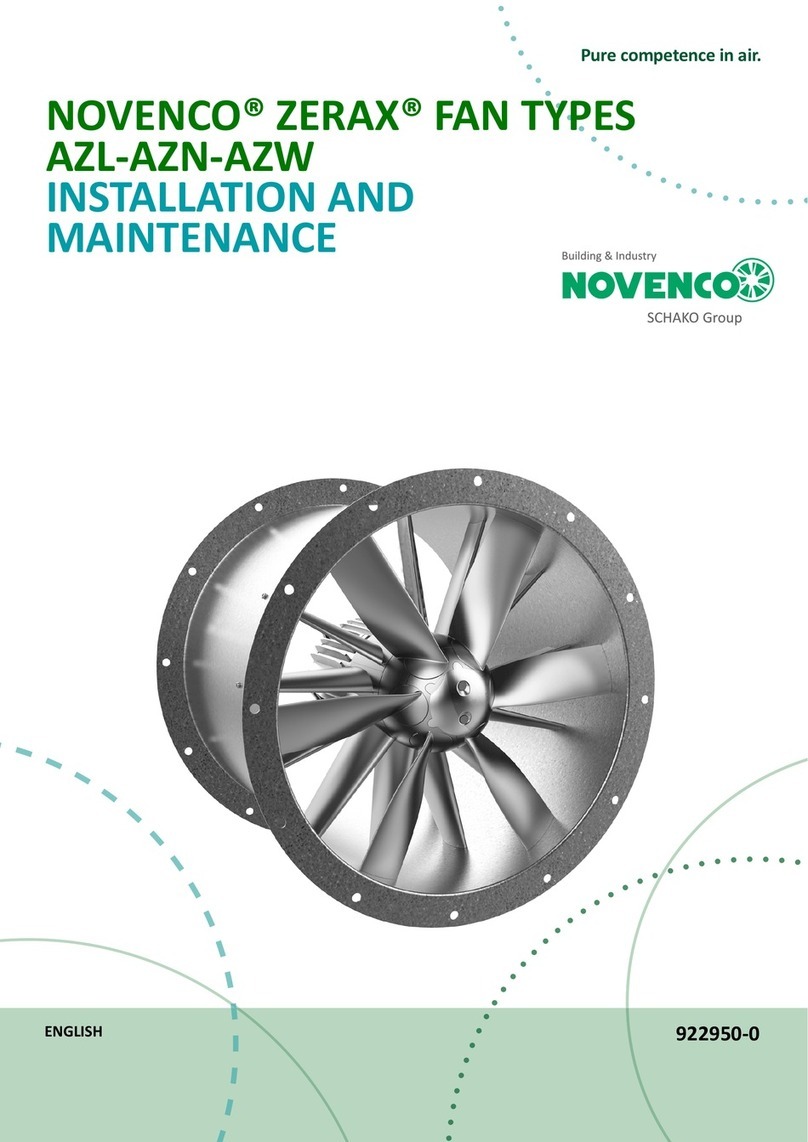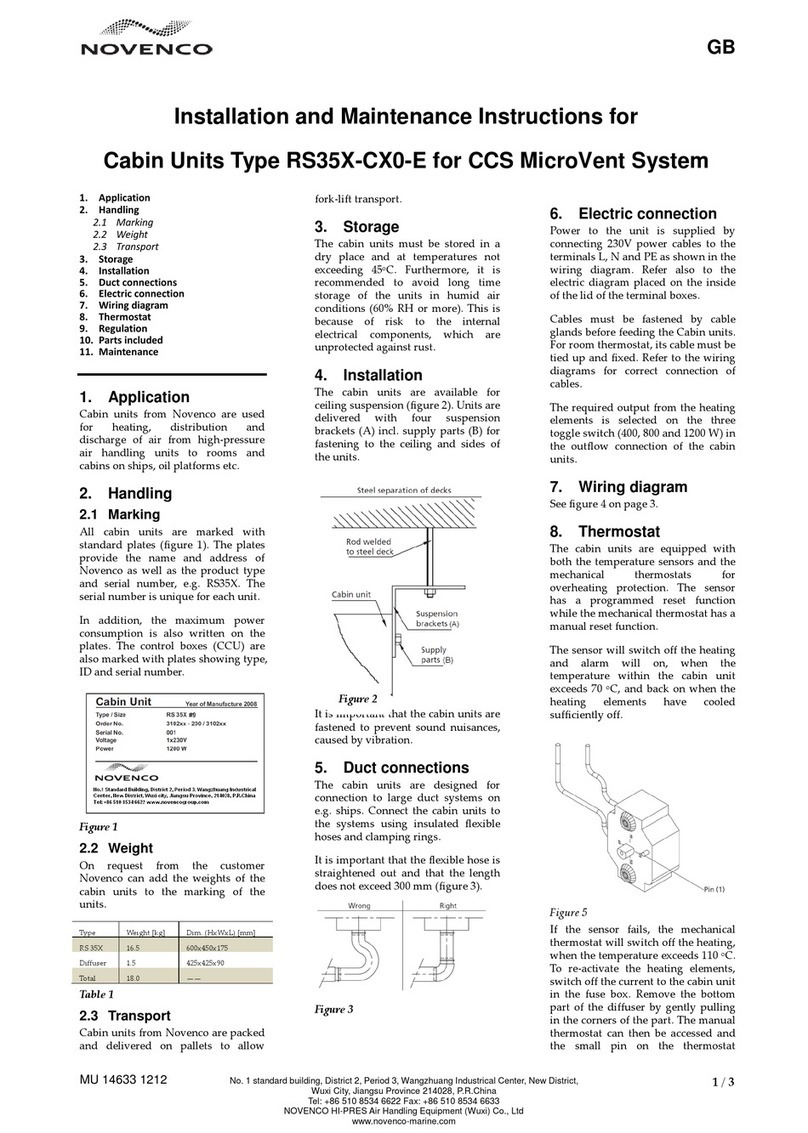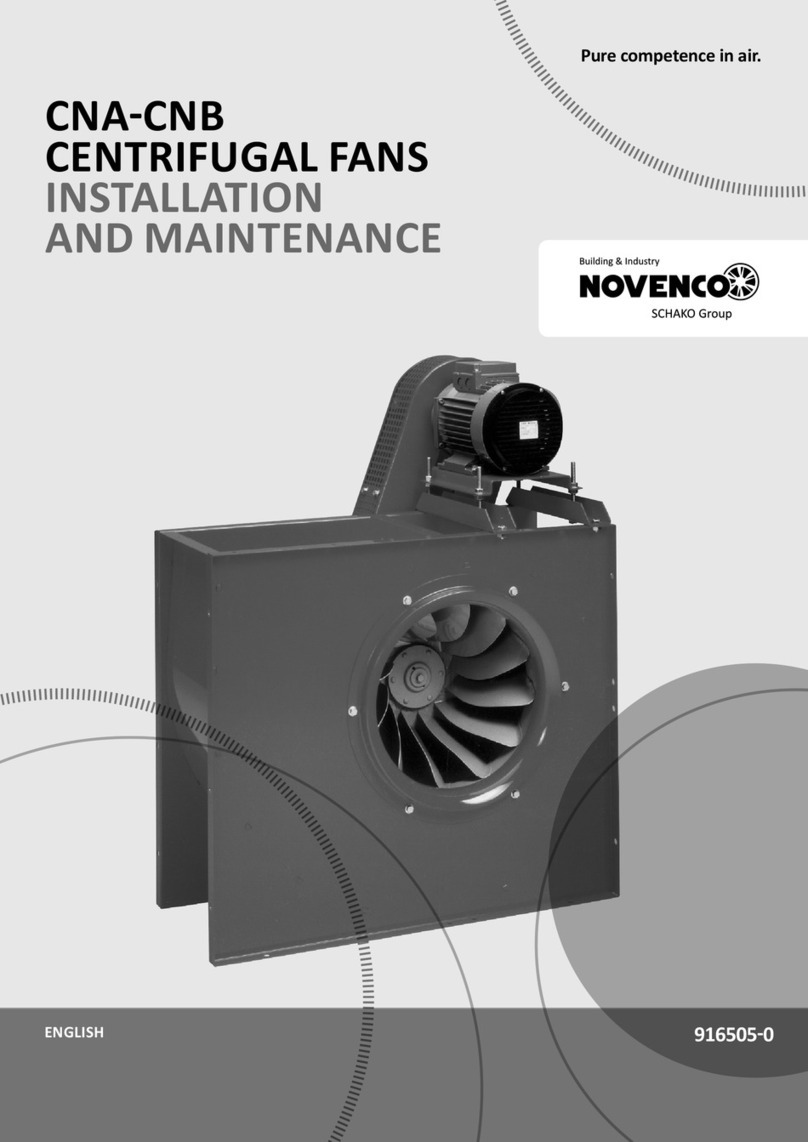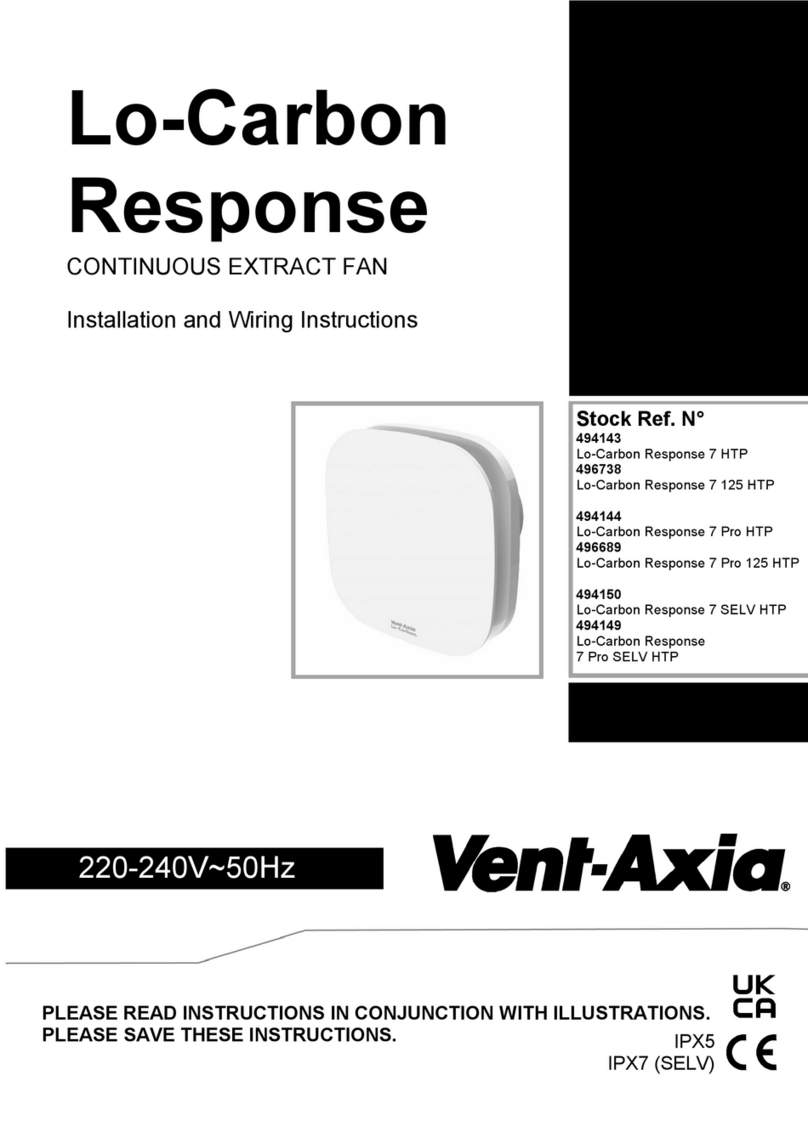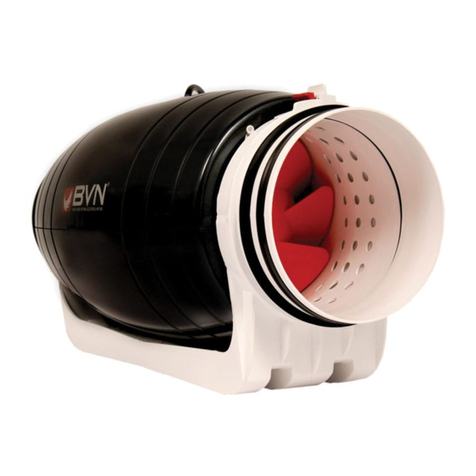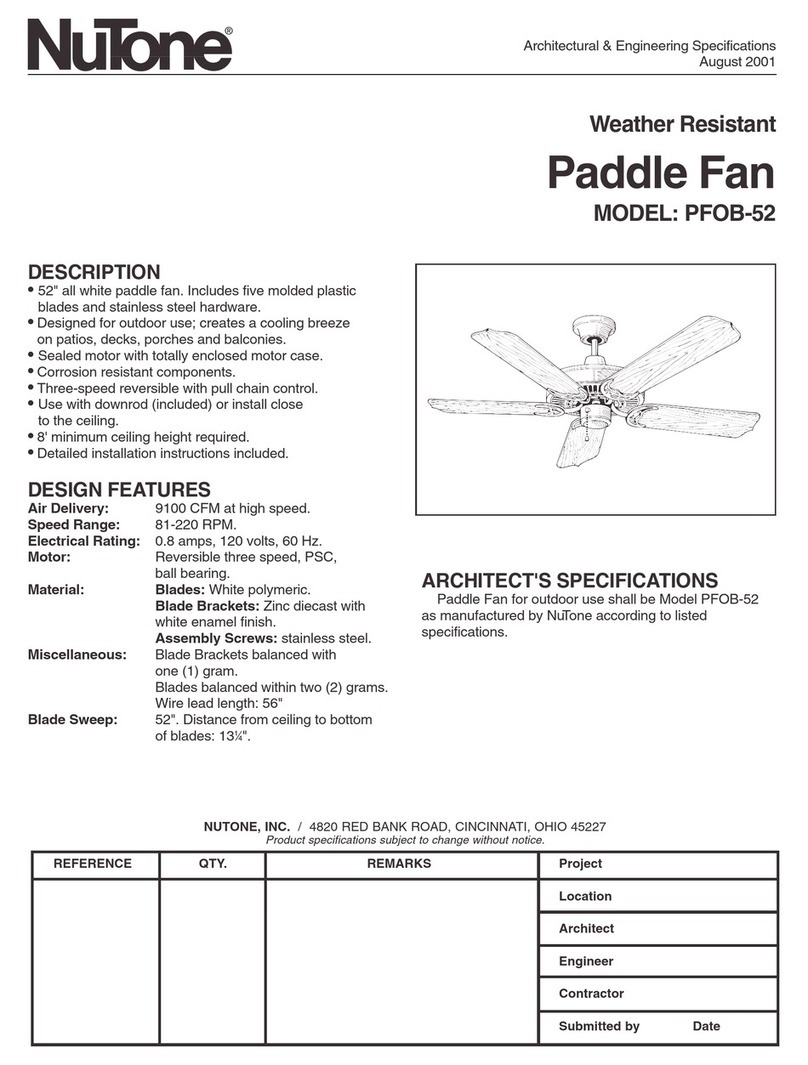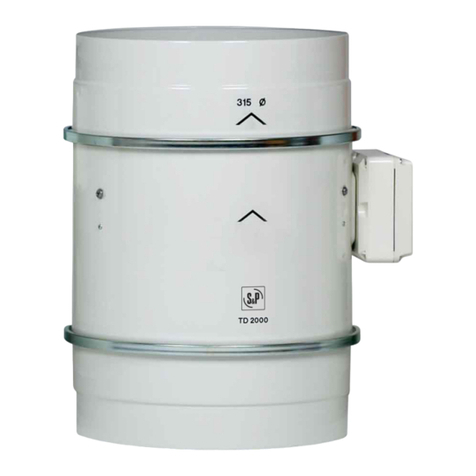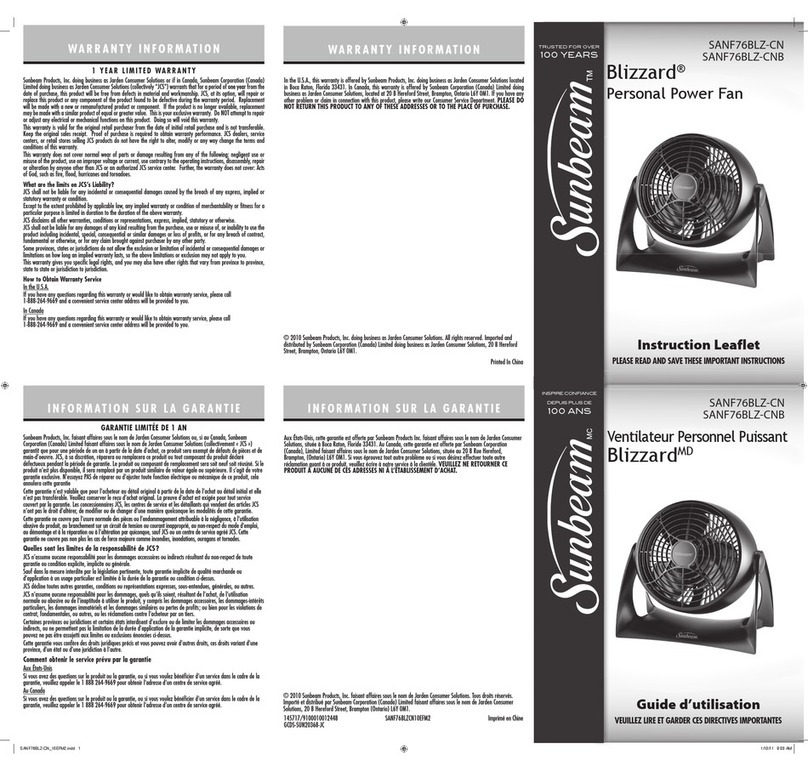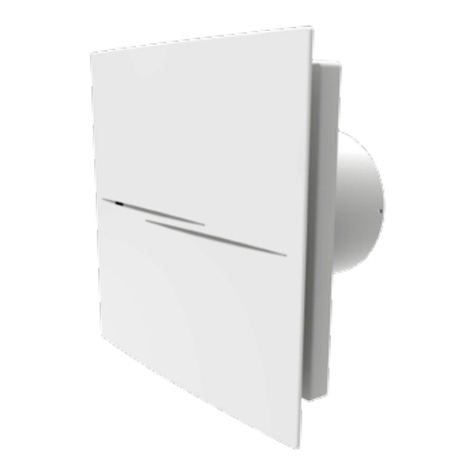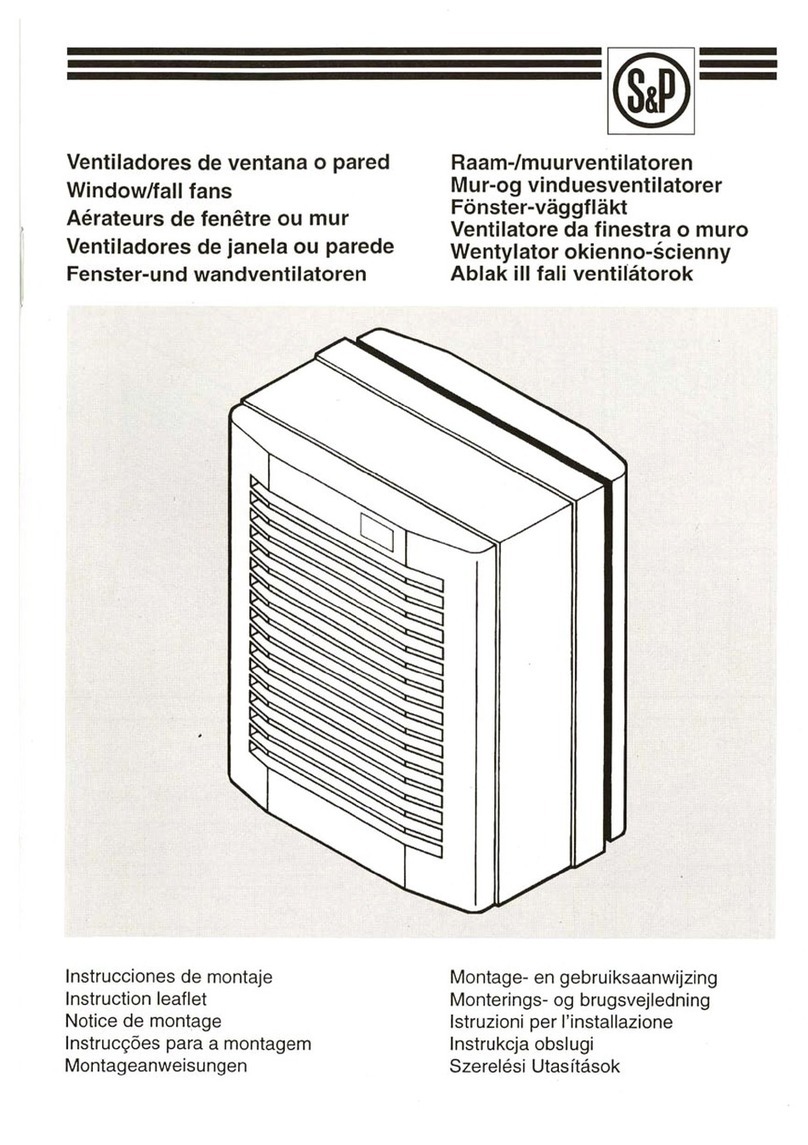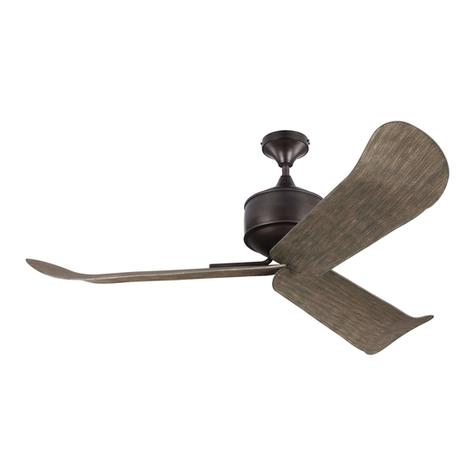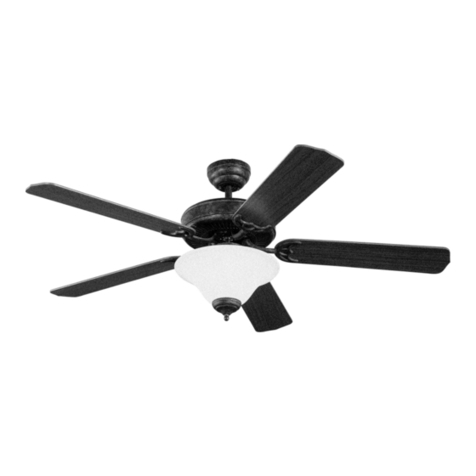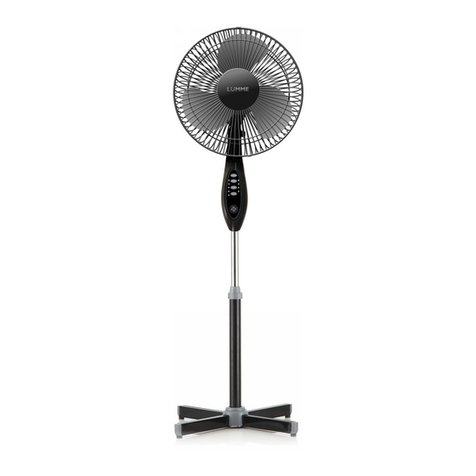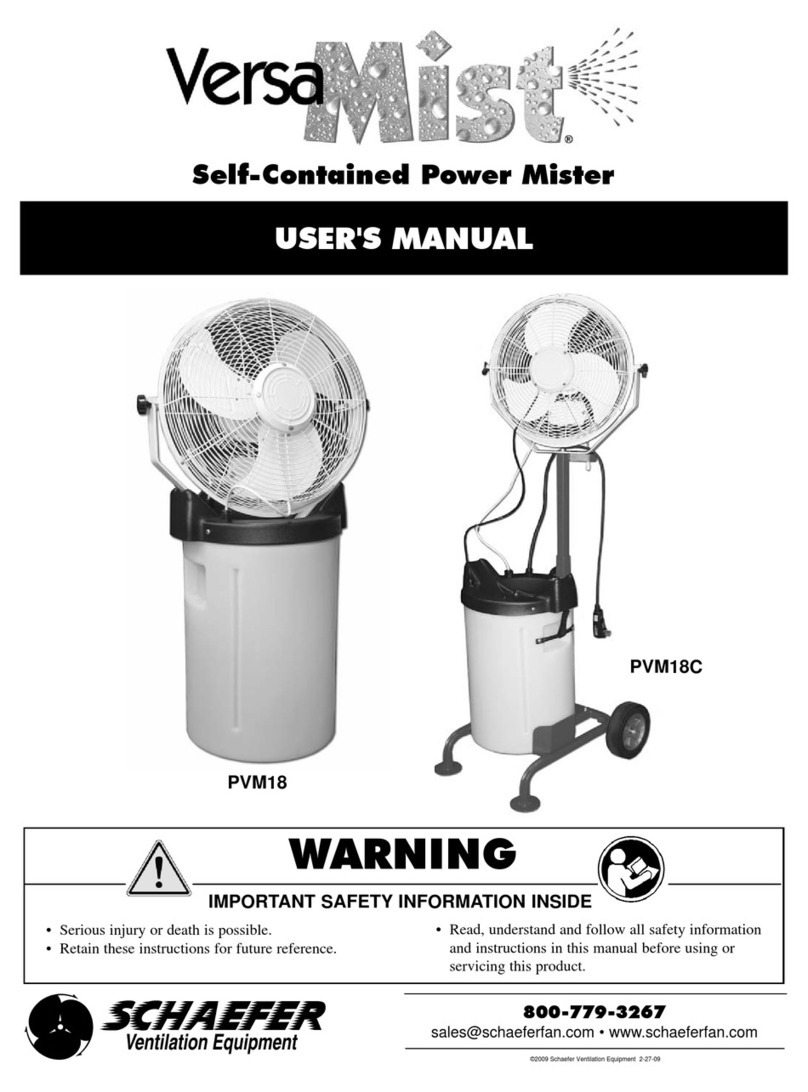
5
of frequency converters for Novenco
fans”.
Shield and connect the fans electrically to
ground to eliminate interference and to
protect the motor bearings and
windings.
Refer to the motor documentation for
methods to avoid impairment of the
supply voltage quality, among them
distances between supply and signal
cables. Methods may involve
installation of rectifiers, filters etc.
Connection references
•Connection diagram in terminal
box lid on fan
•Motor name plate
•Order specification
Only fans with steel inner hubs
may be run in reverse and this
for short periods at speeds up to
the max. allowable of normal direction.
The airflow is reduced to approx. 50%
of normal for the same system
resistance. The pressure is reduced to
25%.
Reversible operation increases the risk
of stall and shortens fan life.
The rotor must be completely
stationary, before restart of the fan for
directional change of rotation. It is
recommended to install a time delay
for this purpose.
Check that the rotational direction of the
rotor complies with the arrow on the out-
side of the fan casing. Flick the fan power
briefly On, then Off. If the direction is
wrong, disconnect the main power sup-
ply and check the connections.
5. Start of operation
5.1 Before start-up
Check the fans and installation location
in accordance to the below checklist and
correct and improve as necessary.
Checklist
•Safe operation
The blade clearance must be
minimum 0.1x motor shaft
diameter (min. 2 mm, max. 13 mm)
all around the rotor circumference.
The axial distance between the
rotor hub and stator must be min.
3.5 mm.
Wire guards should be mounted on
the inlet and outlet sides.
•Transportation rods
Fans on support frames and with
vibration dampers have
transportation rods in the support
frames, which must be removed
before start of operation. The
handles are marked with a strong
colour.
•Clean ducts
The fans andduct connections must
be clean and free from tools and
objects that can affect the airflow.
•Electrical connections
The electrical connections must be
correct and in accordance to the
prescribed requirements. Switch
the fan power briefly On, then Off,
to check the rotational direction of
the rotor.
5.2 Motors with Y/ starting
Set the relay for start of the fans to the
start-up time from the technical specifi-
cations from the AirBox program. Alter-
natively, calculate the value with the be-
low formula.
Calculation of start-up time
The motor torque can vary within the be-
low limits and affect the start-up time.
5.3 Starting procedure
Start the fan.
The maximum allowable fan speed de-
pends among other things on the ambi-
ent temperature and the space in front
and behind of the fan. Refer to the Air-
Box calculation program and technical
fan specifications.
Check that no abnormal noises occur.
See that the vibration level is normal. The
vibration level at the fan operating speed
must not exceed 7 mm/s rms, measured
radially at 2 points, 90ºoffset and at the
free shaft end of the motor. Otherwise,
the fan must be balanced. Operation at a
higher vibration level exceeding 11 mm/
s rms* is not allowed in case of fixed fan
position.
Operation at a higher vibration level ex-
ceeding 18 mm/s rms* is not allowed in
case of position on feet or anti-vibration
mountings.
After 30 minutes of operation check that
the fan operates normally.
* ISO 2954, Requirements for instru-
ments for measuring vibration severity.
The fans are designed for
continuous operation. The
below kinds of operation may
cause fatigue breaks in the rotors and
endanger people.
•Operation in stall area, i.e. with
counter pressure that pulsates -
called pump mode
•Operation with uninterrupted
and repeated starts and stops
•Uneven flow velocity through
the fans
Ask Novenco if in doubt.
6. Maintenance
6.1 Before maintenance
Switch off the power and
disconnect the motor cable in
the terminal box, before
beginning work on the rotor and motor.
6.2 Fan casings
The fan casing requires no maintenance
other than ordinary cleaning.
If the fan casing is painted, the painted
surface should be checked regularly and
repaired where necessary.
6.3 Rotors
At the factory, the rotor blades are set to
the pitch that corresponds to the desired
operating point with regard to pressure,
airflow and fan speed. To ensure vibra-
tion-free operation the rotor has been
carefully balanced in this position.
ts=
ts: Start-up time [s]
P : Rated output of motor [kW]
Pv: Required power of fan [kW]
n : Fan speed [RPM]
:Ratio between the start and
the nominal motor torque
:Ratio between maximum and
nominal motor torque
Iv:Polar moment of inertia for fan
[kgm2]
Im:Polar moment of inertia for
motor [kgm2]
Ms: -15% to +25% of catalogue val-
ue
Mk: -10% to 0% of catalogue value
0.24 n2ImIv
+
104PMs
M
------- Mk
M
-------- Pv
P
------
–+
-----------------------------------------------------------------
Ms
M
-------
Mk
M
--------










